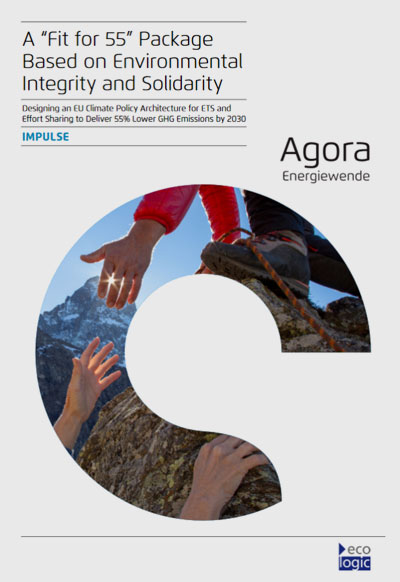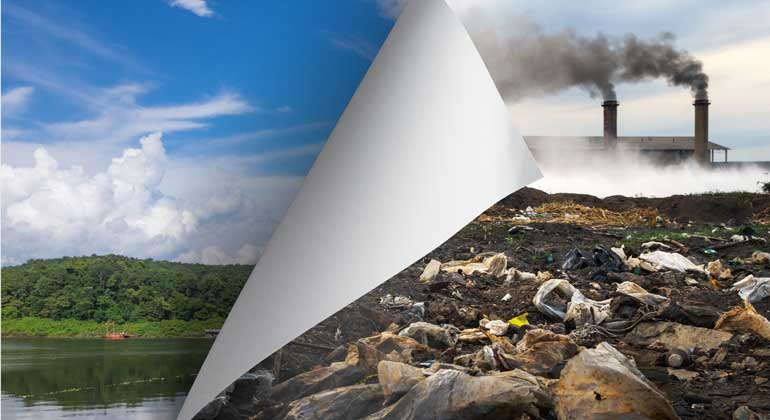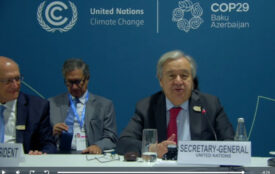What EU leaders fail to discuss: Bold choices on Europe’s higher 2030 climate ambition
Which role should CO2 pricing play in future climate policy? Should Member States or EU wide policies be responsible to deliver the 2030 target? To whom should money be flowing? Agora Energiewende’s new study addresses the key options for the “Fit for 55” climate package that should have been discussed at the European Council on March 25.
In June, the European Commission will propose a legislative package called “Fit for 55” with new and strengthened policies to deliver the EU’s climate target of 55 percent greenhouse gas emissions reductions by 2030. However, fundamental political decisions that should be discussed ahead of the release of the package are not on today’s European Council agenda, despite announcements to this effect in December 2020. A new study by Agora Energiewende shows how a more ambitious target can be reached while addressing two main concerns: an efficient mix of policy instruments and an equitable distribution of burdens.
While the EU has decided to raise its 2030 climate target to 55 percent, it is far from being on track to reach this objective. The European Commission projects at least a 10 percentage points gap for emissions reductions in 2030 based on current scenarios. Quick and decisive action is thus needed across all sectors of the economy to meet the new 2030 target and to prepare for climate neutrality by 2050. The new EU budget will make some contribution to reducing emissions, however, an update of EU climate and energy laws is also needed.
A key point in this debate is the role of the emissions trading in delivering faster and deeper emission cuts by 2030. The European Commission is currently considering the role that an EU-wide emissions trading system for heating and transport fuels could play in delivering these targets – in addition to strengthening existing EU policy instruments, such as CO2-standards for cars. However, these discussions are raising significant concerns from civil society, industry groups, as well as poorer EU countries due to potential distributional and competitiveness impacts.
Agora Energiewende’s new study ‘A “Fit for 55” package based on environmental integrity and solidarity’ investigates four options for regulating heating and transport emissions in the new EU climate policy architecture. Supported by Ecologic Institute, the main focus of the study is on pros and cons of expanding emissions trading to these sectors versus tightening national climate targets under the EU Effort-Sharing Regulation.
“Each option has its benefits and drawbacks, some of which must be dealt with in companion policies. However, for the framework to have environmental integrity and ensure target delivery, Member States will have to clearly define who is accountable for reducing emissions, and who will be responsible if targets are not met”, says Dr. Patrick Graichen, the Executive Director of Agora Energiewende. “These issues are politically difficult, but EU leaders cannot shy away from taking decisions. Time is of essence, we need a bold “Fit for 55” package in June this year!“ Graichen added.
Another important finding is that a carbon price needs strong companion policies to ensure target attainment by 2030. Carbon pricing in the heating and transport sectors can play a central role in reducing emissions from the use of existing cars and heating systems, supporting the business case for clean technologies and raising revenues for clean investments. But to transform the EU economy to climate neutrality in less than three decades, additional policies are needed.
“The ‘Fit for 55’ Package will need to be about a lot more than carbon pricing. To make sure the 55 percent climate target is achieved, Member States must significantly strengthen EU policies such as CO2-standards for vehicles, building codes, or support programs for low-carbon heat grids. Only then will consumers have the low-carbon options that they need to respond to rising carbon prices by reducing their emissions,” said Graichen.

Finally, to ensure fairness, policy makers must not only consider the different income levels of households across the EU, but also the different levels of vulnerability to a rising carbon price. A higher carbon price on emissions from space heating will have a comparatively greater impact on lower-income countries in Eastern Europe. Similarly, a higher carbon price in the EU ETS due an extension of emissions trading to heating and transport will represent a significant burden on some parts of industry. One way of minimizing distributional effects is to redirect revenues from carbon pricing back to parties particularly affected, such as through lump-sum payments to households or targeted investment support for vulnerable households and lower-income Member States.
“While distributional effects are a challenge, there are solutions for resolving them. But for this to be possible 100 percent of revenues from carbon pricing in the heating and transport sectors should flow back to consumers in one way or another,” said Graichen. “Delivering the EU’s climate target will only be successful if environmental integrity and social justice go hand in hand, in particular in the buildings and transport sectors”.








